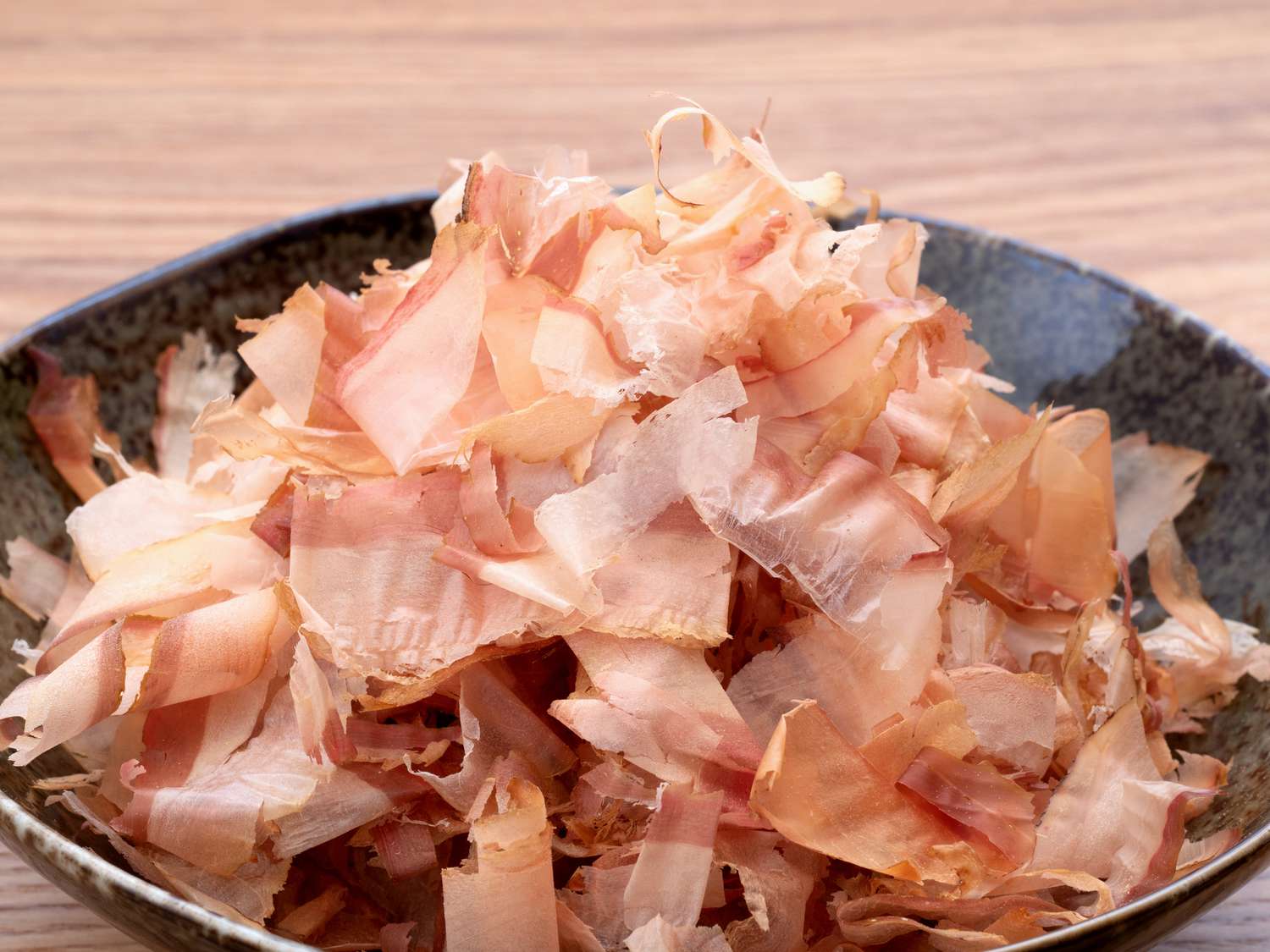
Katsuobushi, also known as bonito flakes, is a staple in Japanese cuisine. Ever wondered what makes this dried, fermented fish so special? Katsuobushi is made from skipjack tuna, which undergoes a meticulous process of boiling, smoking, and fermenting. The result is a hard, wood-like block that can be shaved into thin flakes. These flakes are packed with umami, the savory taste that enhances many dishes. From dashi broth to toppings on okonomiyaki, katsuobushi adds a unique depth of flavor. Curious about its history, preparation, and uses? Let’s dive into 29 fascinating facts about this culinary gem.
What is Katsuobushi?
Katsuobushi, also known as bonito flakes, is a fundamental ingredient in Japanese cuisine. Made from dried, fermented, and smoked skipjack tuna, it adds a unique umami flavor to many dishes. Let's dive into some fascinating facts about this culinary marvel.
-
Katsuobushi is made from skipjack tuna, a type of fish found in tropical and subtropical waters.
-
The process of making katsuobushi involves boiling, smoking, and fermenting the fish, which can take several months.
-
Traditionally, katsuobushi is shaved into thin flakes using a special tool called a katsuobushi kezuriki.
-
Katsuobushi is a key ingredient in dashi, a Japanese soup stock that forms the base of many dishes like miso soup and ramen.
-
The umami flavor in katsuobushi comes from high levels of inosinate, a naturally occurring compound in the fish.
The History of Katsuobushi
Katsuobushi has a rich history that dates back centuries. Its origins are deeply rooted in Japanese culture and culinary traditions.
-
The technique of making katsuobushi dates back to the Edo period in Japan, around the 17th century.
-
Initially, katsuobushi was a method of preserving fish for long periods, especially during times of scarcity.
-
Over time, it evolved into a culinary staple, prized for its unique flavor and versatility.
-
In the past, katsuobushi was considered a luxury item and was often given as a gift to samurai and nobility.
-
Today, katsuobushi is widely available and used in both traditional and modern Japanese cooking.
The Making of Katsuobushi
The process of creating katsuobushi is intricate and time-consuming. Each step contributes to its distinctive taste and texture.
-
First, the skipjack tuna is filleted and boiled to remove excess fat and moisture.
-
After boiling, the fish is smoked for several hours over a wood fire, usually using oak or cherry wood.
-
The smoking process is repeated multiple times, sometimes up to 15 times, to achieve the desired flavor.
-
Once smoked, the fish is left to ferment for several weeks, allowing beneficial mold to grow on its surface.
-
The final step involves drying the fish in the sun, which can take several months, resulting in a rock-hard product.
Culinary Uses of Katsuobushi
Katsuobushi's versatility makes it a beloved ingredient in many Japanese dishes. Its unique flavor enhances both simple and complex recipes.
-
Katsuobushi is often sprinkled on top of dishes like okonomiyaki (Japanese savory pancakes) and takoyaki (octopus balls).
-
It is also used as a garnish for tofu, adding a savory depth to the mild flavor of the bean curd.
-
In addition to dashi, katsuobushi is used in making tsuyu, a dipping sauce for noodles and tempura.
-
Katsuobushi flakes are sometimes mixed with soy sauce and served over rice for a simple yet flavorful dish.
-
The flakes can also be used to make furikake, a seasoning mix that is sprinkled over rice or used in onigiri (rice balls).
Health Benefits of Katsuobushi
Beyond its culinary uses, katsuobushi offers several health benefits, making it a nutritious addition to any diet.
-
Katsuobushi is rich in protein, making it a good source of this essential nutrient.
-
It contains high levels of omega-3 fatty acids, which are beneficial for heart health.
-
The fermentation process increases the levels of beneficial probiotics, which can aid in digestion.
-
Katsuobushi is low in calories, making it a healthy option for those looking to manage their weight.
-
It is also a good source of vitamins and minerals, including B vitamins, iron, and calcium.
Fun Facts About Katsuobushi
Katsuobushi has some quirky and interesting aspects that make it even more intriguing.
-
Katsuobushi is so hard that it is sometimes called the "world's hardest food."
-
The traditional method of making katsuobushi involves a lot of manual labor, making it a true artisanal product.
-
In Japan, there are competitions to see who can shave the thinnest katsuobushi flakes.
-
Katsuobushi has a unique ability to "dance" when placed on hot food, due to the heat causing the thin flakes to move.
The Final Slice
Katsuobushi isn't just a food item; it's a cultural icon in Japan. From its unique production process to its versatile uses in cooking, this dried bonito fish has a rich history and a significant role in Japanese cuisine. Whether you're a seasoned chef or a curious foodie, understanding katsuobushi can elevate your culinary skills and appreciation for Japanese dishes.
Remember, katsuobushi isn't just about flavor; it's about tradition, craftsmanship, and a deep connection to Japanese culture. Next time you sprinkle those delicate flakes on your dish, you'll know the fascinating journey they've been through. So, go ahead, experiment with katsuobushi in your kitchen. You might just find it adds that perfect umami touch you've been missing. Happy cooking!
Was this page helpful?
Our commitment to delivering trustworthy and engaging content is at the heart of what we do. Each fact on our site is contributed by real users like you, bringing a wealth of diverse insights and information. To ensure the highest standards of accuracy and reliability, our dedicated editors meticulously review each submission. This process guarantees that the facts we share are not only fascinating but also credible. Trust in our commitment to quality and authenticity as you explore and learn with us.
